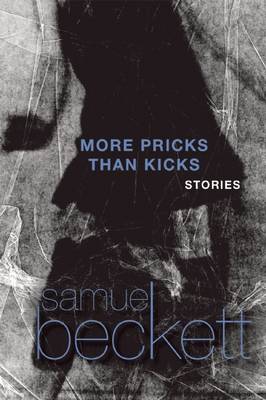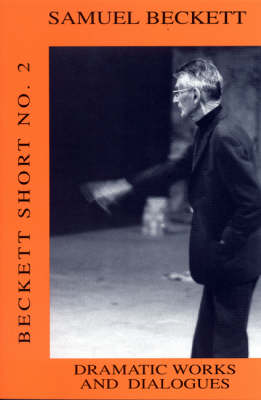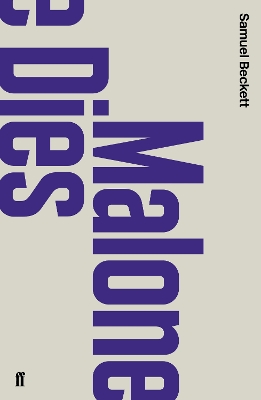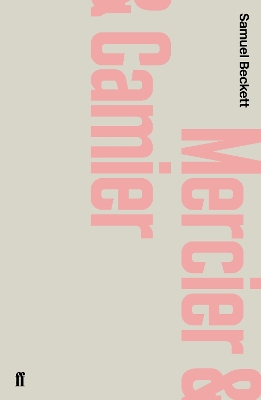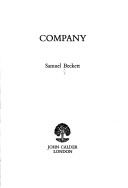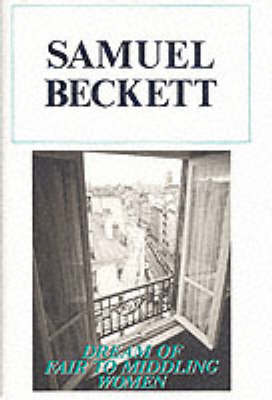Calderbooks S.
1 primary work • 13 total works
Book 447
The quintessential distillation of Beckett's philosophy on human existence and the ultimate example of his minimalist approach to fiction, Nohow On is a vital collection, concerned with conception and perception, memory and imagination.
Belacqua is a student, a philanderer, and a failure, and Beckett portrays the various aspects of his troubled existence: he studies Dante, attempts an ill-fated courtship, witnesses grotesque incidents in the streets of Dublin, attends vapid parties, endures his marriage, and meets his accidental death. These early stories point to the qualities of precision, restraint, satire, and poetry found in Beckett's mature works, and reveal the beginning stages of Beckett's underlying theme of bewilderment in the face of suffering.
'Malone', writes Malone, 'is what I am called now.' On his deathbed, and wiling away the time with stories, the octogenarian Malone's account of his condition is intermittent and contradictory, shifting with the vagaries of the passing days: without mellowness, without elegiacs; wittier, jauntier, and capable of wilder rages than Molloy.
The sound I liked best had nothing noble about it. It was the barking of the dogs, at night, in the clusters of hovels up in the hills, where the stone-cutters lived, like generations of stone-cutters before them. it came down to me where I lay, in the house in the plain, wild and soft, at the limit of earshot, soon weary. The dogs of the valley replied with their gross bay all fangs and jaws and foam...
Published in French in 1961, and in English in 1964, How It Is is a novel in three parts, written in short paragraphs, which tell (abruptly, cajolingly, bleakly) of a narrator lying in the dark, in the mud, repeating his life as he hears it uttered - or remembered - by another voice. Told from within, from the dark, the story is tirelessly and intimately explicit about the feelings that pervade his world, but fragmentary and vague about all else therein or beyond.
Together with Molloy, How It Is counts for many readers as Beckett's greatest accomplishment in the novel form. It is also his most challenging narrative, both stylistically and for the pessimism of its vision, which continues the themes of reduced circumstance, of another life before the present, and the self-appraising search for an essential self, which were inaugurated in the great prose narratives of his earlier trilogy.
she sits aloof ten yards fifteen yards she looks up looks at me says at last to herself all is well he is working my head where is my head it rests on the table my hand trembles on the table she sees I am not sleeping the wind blows tempestuous the little clouds drive before it the table glides from light to darkness darkness to light
Edited by Edouard Magessa O'Reilly
The iconic trilogy of novels by the era-defining Nobel laureate, relaunched for a new generation.
I can't go on, I'll go on.
Molloy: a sordid vagrant riding his bicycle through the countryside, sucking stones, on a quest for his mother. Moran: a private detective sent on his trail, investigating his crimes - but soon to deteriorate alongside him.
Malone: an octogenarian man on his deathbed, naked in piles of blankets, wiling away the time with stories - writing, reminiscing, raging, surviving.
The Unnameable: an armless and legless creature from a nameless place, weeping and watching in his urn, orbited by visitors outside a chop-house.
Together, these selves speak, debate, exist: the prose as alive, or more, than them.
'The master innovator of them all.' Guardian
Written over three months in 1946, Mercier and Camier was Beckett's first post-war work, and his first novel in French. He came to regard it as a practice piece, and set it aside to write his trilogy. Mercier et Camier was finally published in 1970, and in Beckett's English translation four years later.
The eponymous heroes tramp around a city, then out of it, then back again. They are aimless, but there is something elusive that they should be doing. They arrange meetings, they drink, they argue, they discuss being shot of each other. They are preoccupied by the weather, by provisions, by a raincoat, by an umbrella, by a bicycle...
'All of these ingredients in the later work are accompanied here, fleetingly, by those things in Beckett that we know but cannot really name, those things that occupy so much of the trilogy. Intangible things, traps in the mind, that voice we hear, the stop-start understanding, the ongoing bewilderment, the fear.' (Keith Ridgeway).
George, said Camier, five sandwiches, four wrapped and one on the side. You see, he said, turning graciously to Mr Conaire, I think of everything. For the one I eat here will give me the strength to get back with the four others. Sophistry, said Mr Conaire. You set off with your five, wrapped, feel faint, open up, take one out, eat, recuperate, push on with the others. For all response, Camier began to eat. You'll spoil him, said Mr Conaire. Yesterday cakes, today sandwiches, tomorrow crusts and Thursday stones. Mustard, said Camier.

